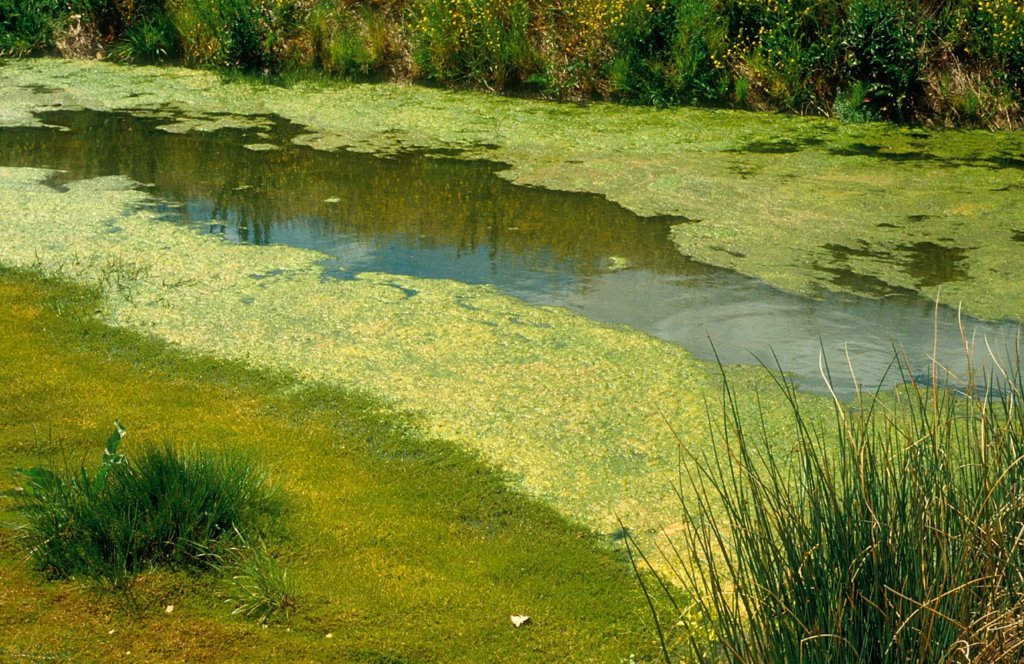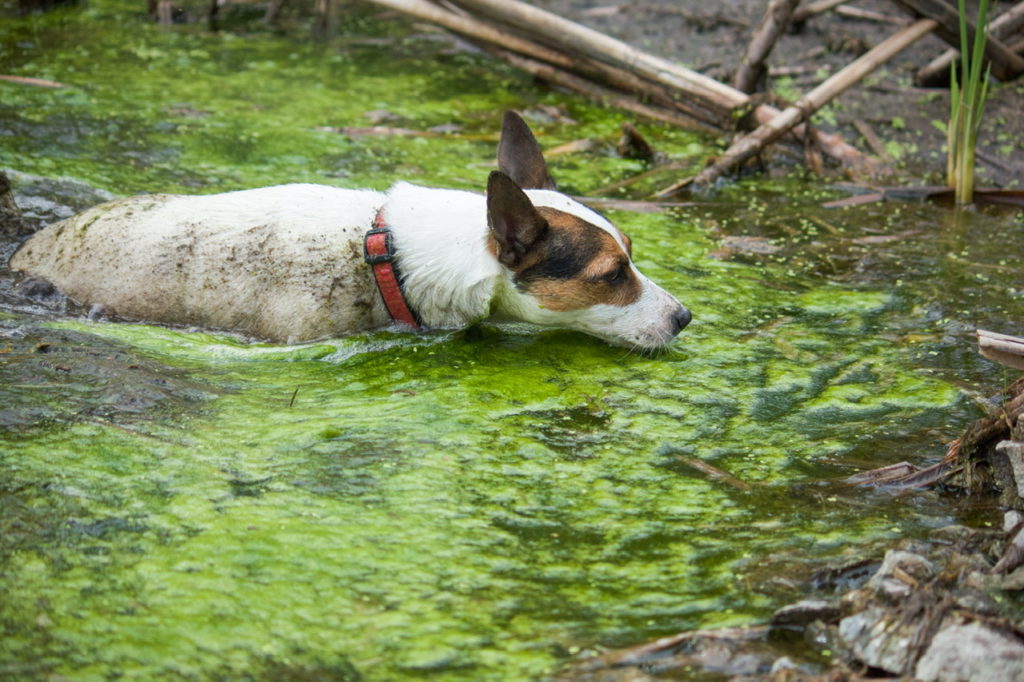In the late summer of 2019, news reports and Facebook accounts from around the country were describing acute neurological signs and even death in dogs that had been out swimming in bodies of water. Even here in the DMV, there were accounts in northern Maryland of dogs falling ill.

Blue Green Algae, also known as Cyanobacteria , are the main organisms that produce the toxins that make blue green algae blooms harmful. Blue-green algae usually forms on or near bodies of water during hot, dry weather months. It is typically found in ponds and lakes, but can also be present in oceans, fresh water, damp soil, backyard fountains and even on rocks. Sometimes the algae look like grains of floating green sand or scum in nutrient rich water. Not all blooms are toxic but it is challenging to determine without specialized testing.

Dogs are more susceptible as they can ingest the substances by drinking water, swimming or licking it off their fur. If consumed, blue-green algae can cause severe neurologic or liver signs.
Signs of blue-green algae toxicity include:
- Seizures
- Panting
- Excessive drooling
- Respiratory difficulty/failure
- Diarrhea
- Disorientation
- Vomiting
- Liver failure
Prevention is the key! Avoid swimming areas that have heavy algae growth (both dogs and humans). Most local health departments will put up signs if there are concerns for toxic algae blooms-respect the signs! If your dog is acting abnormally after swimming in a suspect area, get to your veterinarian ASAP. Unfortunately, there is no specific antidote available and treatment is usually supportive and symptomatic.

Dr. Christine Klippen received a BS in Animal Sciences from Colorado State and a BS in Nursing from George Mason University. She attended Colorado State University for veterinary school and has been working in specialty hospitals since 2009. Dr. Klippen is part of our Emergency & Critical Care team and has a special interest in critical care, toxicology, trauma and education.
